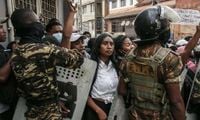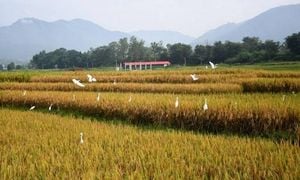In the heart of the Himalayas, Nepal has become an unexpected epicenter of a global wave of youth-led uprisings, with Generation Z at the helm. The events of September 2025—sparked by the government’s sweeping social media ban—have not only shaken the nation’s political foundations but also echoed the frustrations and aspirations of young people worldwide. The latest forensic investigations into the aftermath of these protests, detailed by multiple sources including The New York Times and local outlets, have brought new urgency to the question: Can Nepal finally break free from decades of instability and forge a future truly owned by its people?
The seeds of the Gen Z uprising were sown long before the dramatic events of September. For nearly half a century, Nepal’s political landscape has been marked by frequent changes in government—fourteen administrations since 2008 alone—without delivering the meaningful reforms so desperately needed. As reported by Business Recorder, this cycle left state institutions fragile and public trust deeply eroded. Unemployment soared above 20%, and poverty deepened, fueling a combustible mix of economic despair and institutional drift.
The government’s decision to ban social media was the final straw. For Nepal’s youth, social media is much more than entertainment—it is identity, opportunity, and the primary platform for dissent. When a viral video exposed the lavish lifestyles of the so-called “Nepo kids” (the privileged offspring of the ruling elite), the government’s attempt to silence the conversation was seen as an attack on the very future of Generation Z.
The response from young Nepalis was swift and explosive. University students and unemployed youth surged into the streets, chasing down ministers and storming government buildings. The Parliament was set ablaze, and in a symbolic act, protesters hurled furniture out of the windows, chanting, “This is the house that did nothing for us!” The presidential palace, Supreme Court, ministries, and party offices were all besieged. According to Business Recorder, these actions were not the work of foreign agents but a raw, indigenous movement demanding justice, opportunity, and dignity.
As The New York Times and local reports document, the aftermath of the protests has been equally dramatic. More than six weeks after the uprising, police have finally begun forensic investigations into the widespread arson that accompanied the unrest. Ashes were collected from key administrative centers, including Singhdarbar, the Supreme Court, the Parliament Building, the President’s Office, and private establishments such as Kantipur Media Group and Bhat Bhateni Supermarket. A special inquiry committee, led by Superintendent of Police Kaji Kumar Acharya, was formed amid suspicions about the coordinated nature of the fires that broke out on September 9.
Forensic officers collected five ash samples from Kantipur’s Thapathali office alone, hoping to determine whether chemical accelerants—possibly Molotov cocktails, as discussed in over 356 messages on Discord servers used by activists—were involved. The commission investigating the protests requested that police test the ashes before chemical traces could disappear, a move echoed by forensic experts who warned that delays could compromise the investigation. "We asked for testing before the matter became widely discussed outside, as any delay could result in chemical traces being lost. We recommended testing six designated locations, which will make preparing the final report easier," said Bigyan Raj Sharma, a member of the inquiry commission, in comments to the Kathmandu Post.
The urgency stems not only from the need for accountability but also from the broader question of stability in Nepal. As Business Recorder and other sources highlight, Nepal’s crisis is not unique. From Sri Lanka in 2022, where student-led protests ousted President Gotabaya Rajapaksa, to Bangladesh in 2024 and Madagascar in 2025, Generation Z has emerged as a force of change across continents. In each case, youth movements have demanded an end to corruption, nepotism, and elite capture, insisting on justice, free expression, and economic opportunity.
But Nepal’s situation carries special weight for the region. Both India and China have a vested interest in a stable Nepal—India fears refugee surges and eroding influence, while China sees Nepal as a key link in its Belt and Road Initiative. Yet, as Business Recorder notes, heavy-handed foreign influence has often done as much harm as good. For Nepal to move forward, it must engage its neighbors as constructive partners, insisting on respect, restraint, and transparency.
The outsized presence of international agencies and donors in Kathmandu has also come under scrutiny. While organizations like the United Nations Development Programme tout improvements in human development, most Nepalis see little tangible benefit. Dependency on donor agendas has stifled local initiative and led to a "second government" of agency heads and ambassadors. Experts now recommend capping the number of international agencies, aligning mandates with national priorities, and reducing aid sector salaries to match those of government employees—a move that would help stem the brain drain from public service.
Calls for reform go beyond the aid sector. The path to lasting stability, according to experts cited by Business Recorder, lies in strengthening the Election Commission, bureaucracy, courts, and security sector to ensure both accountability and technical feasibility. Transparency and formal procedures in government dealings with foreign agencies are also seen as crucial to restoring sovereignty and public trust.
Yet, perhaps the most important lesson from Nepal’s Gen Z uprising is that stability is not merely the absence of violence or the presence of a functioning government. It is the creation of lasting capacity for self-governance, credible rule of law, and an economic future that offers real hope. The next chapter for Nepal, as experts insist, cannot be written by foreign hands or through incremental fixes. It must be owned, vocally and visibly, by Nepalis themselves—especially the young.
As the forensic investigations unfold and the nation grapples with the aftermath of unprecedented youth-led upheaval, one thing is clear: Nepal stands at a crossroads. The choices made now—by politicians, civil servants, international partners, and above all, the country’s youth—will determine whether Nepal remains trapped in cycles of instability or finally seizes the chance to thrive on its own terms. The world is watching, and so is a restless generation determined not to be silenced.




